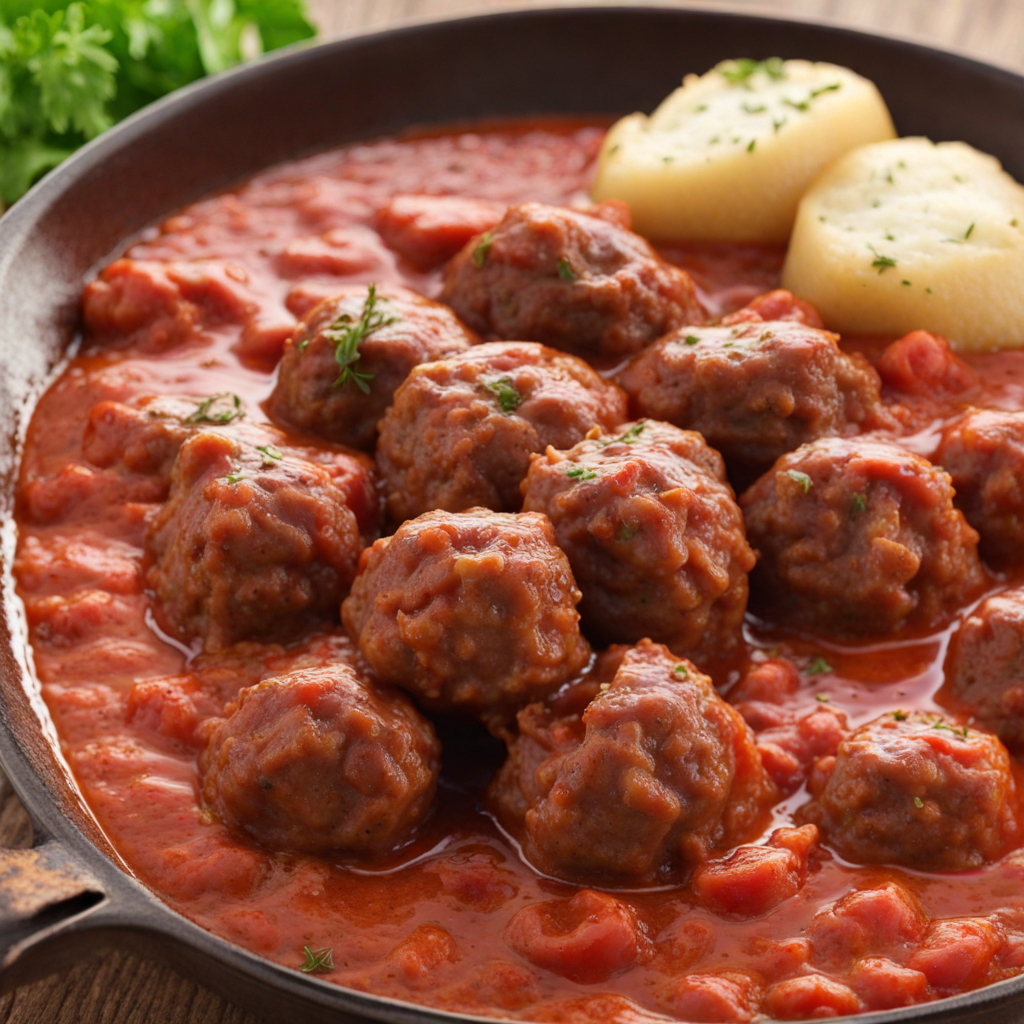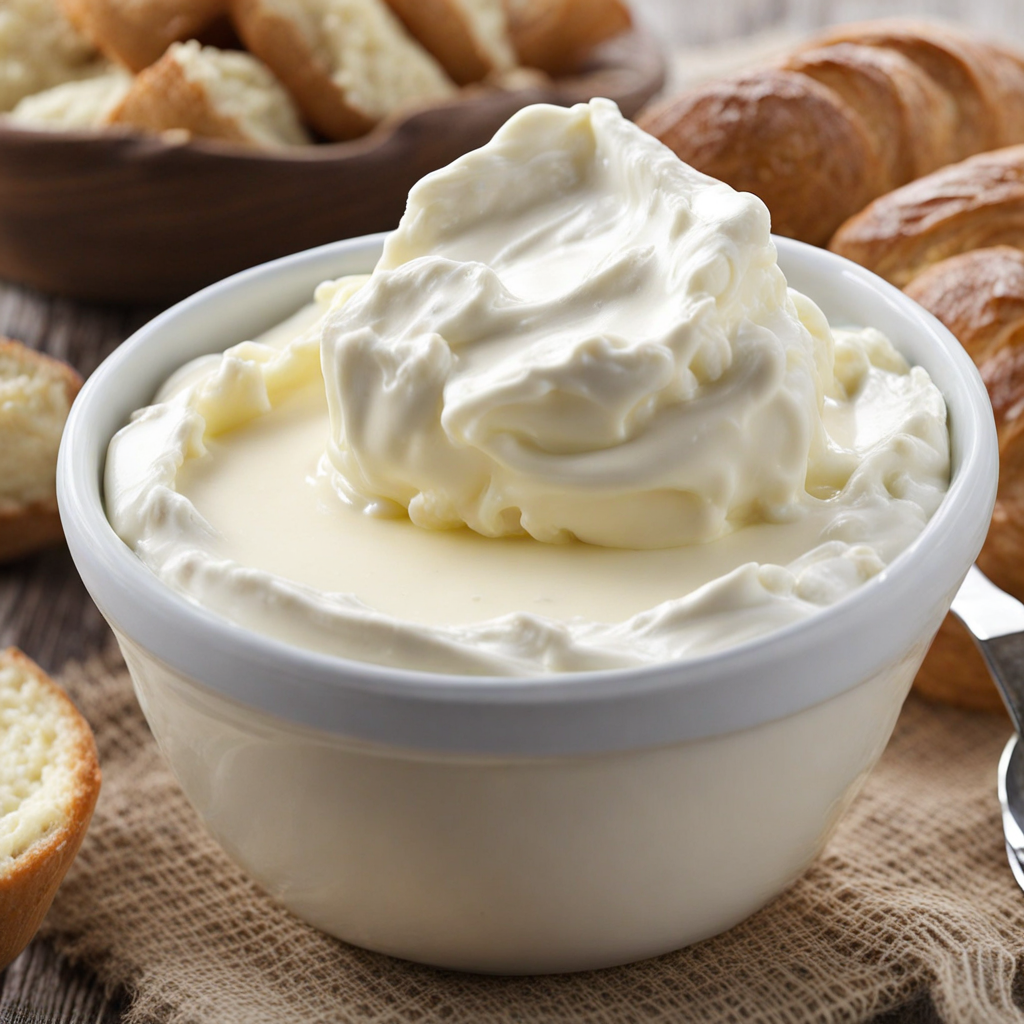Hurmašice
Hurmašice is a delightful traditional dessert from Bosnia and Herzegovina, characterized by its unique blend of flavors and textures. This sweet treat is made primarily from semolina, flour, and sugar, which create a soft, cake-like base that is both moist and satisfying. The semolina gives Hurmašice a slightly grainy texture, enhancing the overall mouthfeel. The cake is typically flavored with a hint of vanilla or lemon zest, adding a refreshing brightness that balances the sweetness of the dish. What sets Hurmašice apart is its generous soaking in a sweet syrup made from sugar, water, and lemon juice after baking. This soaking process infuses the dessert with moisture and sweetness, making each bite a heavenly experience. The syrup is often flavored with a touch of rose or orange blossom water, which lends an aromatic quality that elevates the dessert to a new level. The result is a beautifully glazed cake that glistens invitingly, making it hard to resist. Hurmašice is commonly enjoyed during special occasions and family gatherings, symbolizing warmth and hospitality in Bosnian culture. It is typically cut into diamond or rectangular shapes and served alongside coffee or tea, making it a perfect accompaniment for social moments. The combination of its rich flavors, delightful texture, and aromatic notes makes Hurmašice a must-try for anyone looking to explore the sweet side of Bosnian cuisine.
How It Became This Dish
The History of Хурмашице: A Bosnian Culinary Treasure #### Origins Хурмашице, pronounced as "Hurmasice," is a traditional sweet dish that holds a special place in the culinary landscape of Bosnia and Herzegovina. The name "Hurmasice" is derived from the Turkish word "hurma," which means "date," reflecting the dish's historical ties to the Ottoman Empire. This sweet treat is essentially a semolina-based cake, often flavored with orange or lemon zest, and sweetened with a syrup made from sugar and water, sometimes infused with floral or citrus notes. The origins of Хурмашице can be traced back to the culinary traditions of the Ottoman Turks, who ruled the Balkan region from the 15th to the 19th centuries. The Ottomans brought with them a rich tapestry of culinary practices, many of which blended with local ingredients and customs to create a unique fusion of flavors. The use of semolina, a staple in many Middle Eastern desserts, is a testament to this influence. Over time, Хурмашице evolved into a beloved local specialty, adapted to the tastes and preferences of the Bosnian people. #### Cultural Significance Хурмашице is more than just a dessert; it embodies the cultural heritage and communal spirit of Bosnia and Herzegovina. Traditionally, it is prepared for special occasions, such as weddings, religious holidays, and family gatherings. The act of making Хурмашице is often a communal affair, with family members coming together to share recipes and techniques passed down through generations. This communal aspect highlights the importance of family and togetherness in Bosnian culture. The dish is also a reflection of the region's historical influences. The balance of flavors—sweetness from the syrup, the richness of the semolina, and the tanginess from the citrus—mirrors the diverse influences that have shaped Bosnia and Herzegovina over the centuries. In a country marked by its multicultural heritage, Хурмашице serves as a delicious reminder of the shared culinary practices and narratives that unite its people. #### Development Over Time As time progressed, Хурмашице gained popularity beyond the confines of family gatherings, becoming a staple in bakeries and restaurants across Bosnia and Herzegovina. The recipe has seen various adaptations, often depending on regional preferences and the availability of ingredients. Some variations include the addition of nuts, such as walnuts or almonds, which enhance the texture and flavor profile, while others may incorporate different types of syrups or flavorings. During the 20th century, as Bosnia and Herzegovina underwent significant political and social changes, the role of Хурмашице in the culinary landscape evolved as well. The disintegration of Yugoslavia in the 1990s brought about a resurgence of interest in traditional foods as a means of cultural preservation. Chefs and home cooks alike began to embrace and celebrate regional dishes, including Хурмашице, as symbols of national identity and pride. In contemporary Bosnia, Хурмашице has found its way into modern culinary practices. While still retaining its traditional roots, chefs are experimenting with the dish, presenting it in innovative ways that appeal to a younger generation. For instance, some may serve Хурмашице with a contemporary twist, such as pairing it with ice cream or incorporating seasonal fruits, thus bridging the gap between tradition and modernity. #### The Ingredients and Preparation The preparation of Хурмашице is relatively simple, yet it requires a certain level of skill to achieve the perfect texture and taste. The primary ingredient, semolina, is combined with butter, sugar, and yogurt to create a rich batter. The mixture is then baked until golden brown and cut into diamond or square shapes. Once baked, the sweet syrup, made from sugar and water, is poured over the hot cake, allowing it to absorb the syrup and become moist. The simplicity of the ingredients reflects the resourcefulness of Bosnian cuisine, where humble ingredients are transformed into something extraordinary through careful preparation and the use of traditional techniques. The dish is typically garnished with a sprinkle of crushed nuts or a dusting of powdered sugar, adding a decorative touch that enhances its visual appeal. #### Хурмашице in Modern Bosnian Cuisine Today, Хурмашице can be found on the menus of many Bosnian restaurants, both in the country and in Bosnian diaspora communities worldwide. It serves as a culinary ambassador, introducing people to the rich flavors and traditions of Bosnian cuisine. In the context of globalization, the dish has also gained recognition at international food festivals and culinary events, showcasing the depth of Bosnian culinary heritage to a broader audience. Moreover, social media has played a significant role in the revival and popularization of traditional foods like Хурмашице. Food bloggers and influencers are sharing recipes, cooking tutorials, and personal stories related to the dish, sparking interest among a new generation of food enthusiasts. This digital age of culinary exploration has contributed to the ongoing appreciation and reinvigoration of traditional Bosnian dishes. #### Conclusion Хурмашице is more than a dessert; it is a testament to the resilience and creativity of Bosnian culture. Its origins in the Ottoman culinary tradition and its evolution over time reflect the rich tapestry of influences that have shaped the region’s history. As a beloved dish that brings families together and serves as a symbol of cultural identity, Хурмашице continues to hold a cherished place in the hearts and homes of the Bosnian people. The future of Хурмашице looks promising, as it adapts to modern tastes while remaining grounded in tradition. Whether enjoyed at a festive gathering or as a comforting homemade treat, Хурмашице will undoubtedly continue to be a sweet reminder of the enduring connections between food, culture, and community in Bosnia and Herzegovina.
You may like
Discover local flavors from Bosnia And Herzegovina







